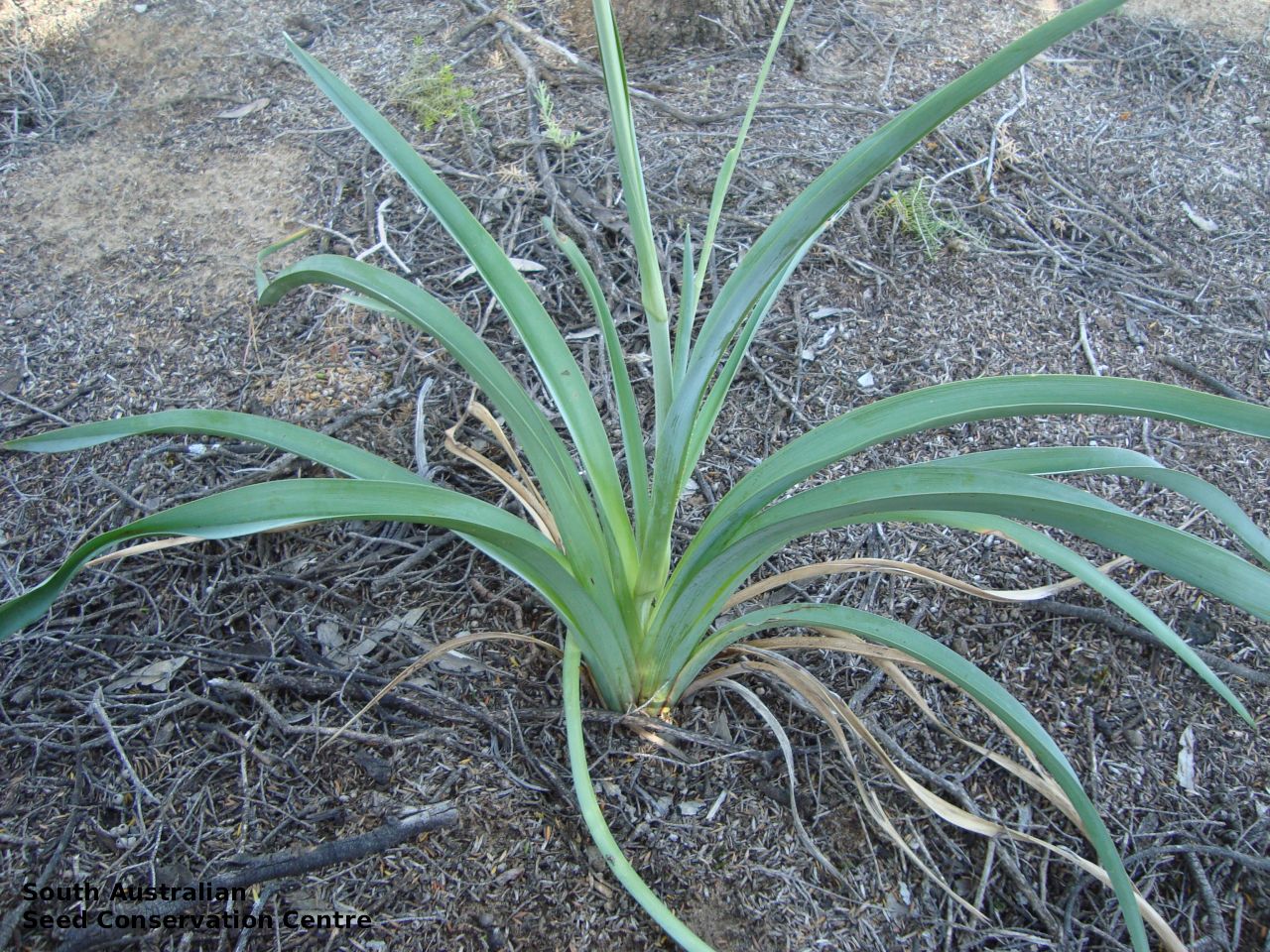
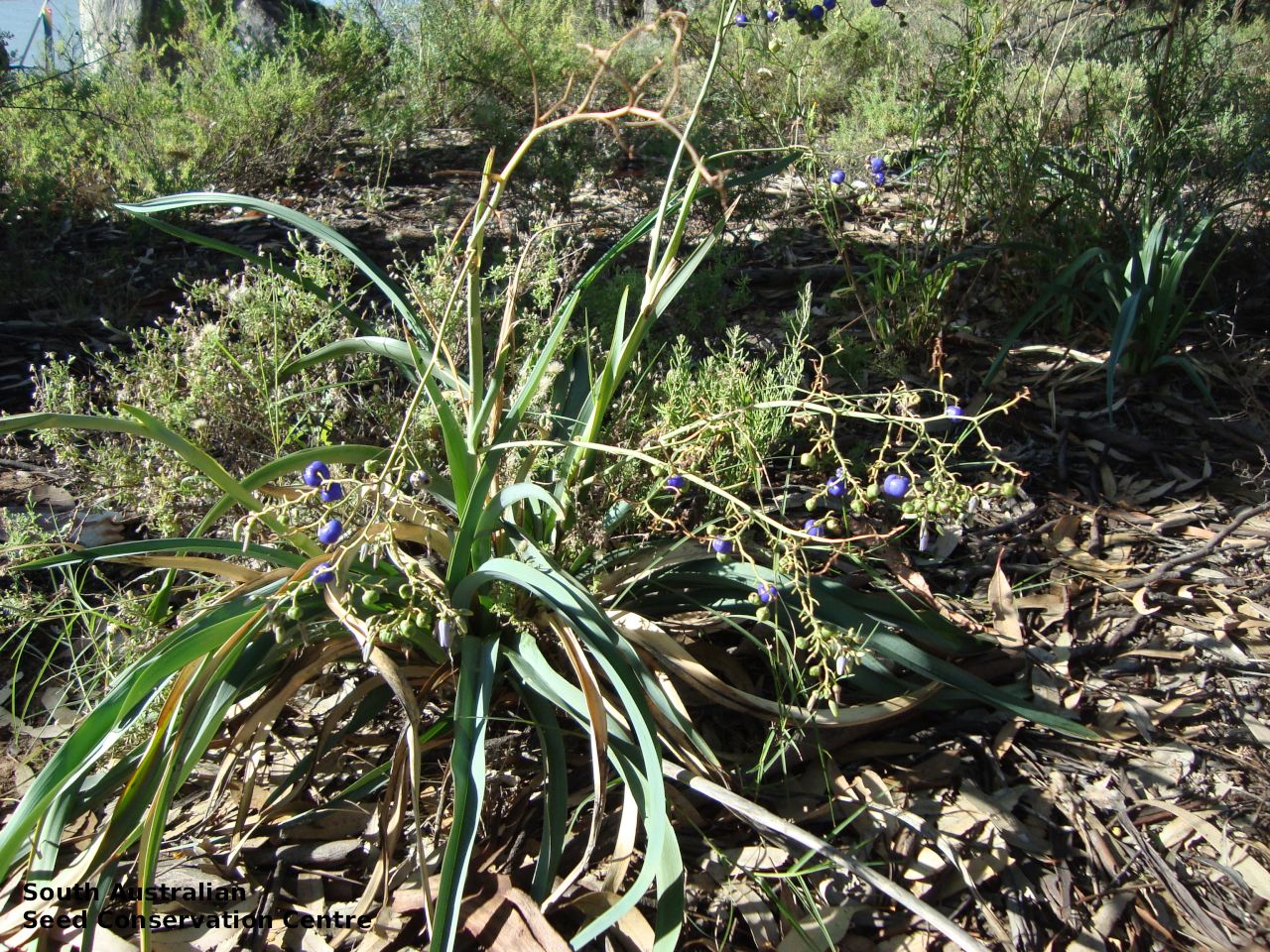
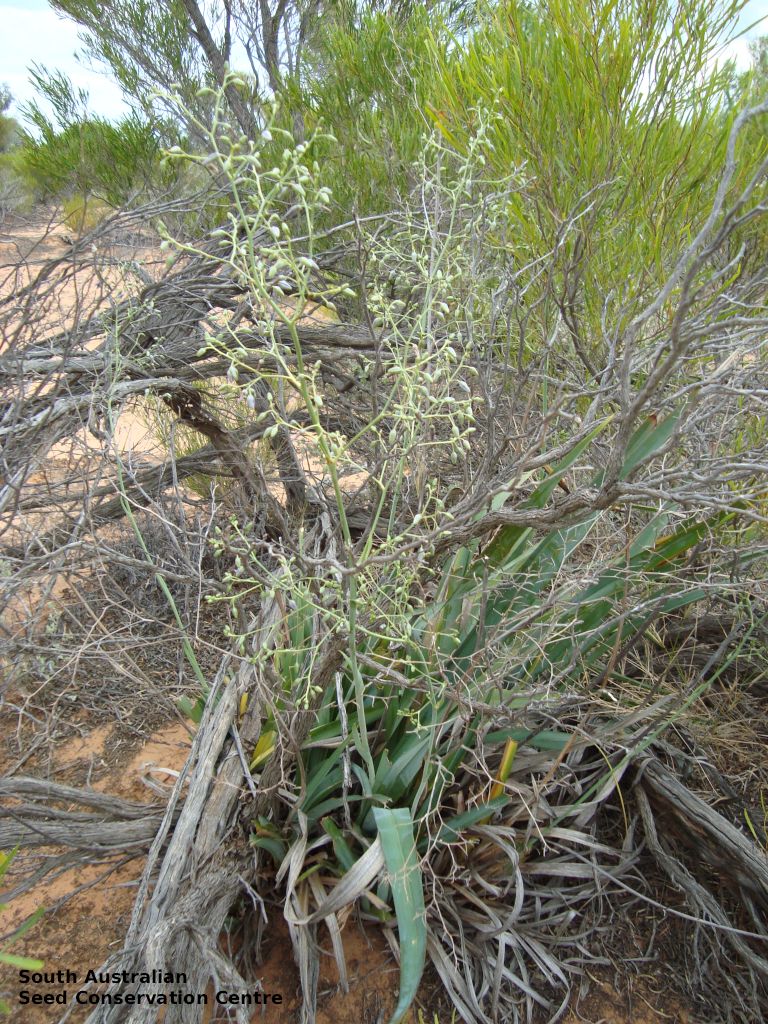
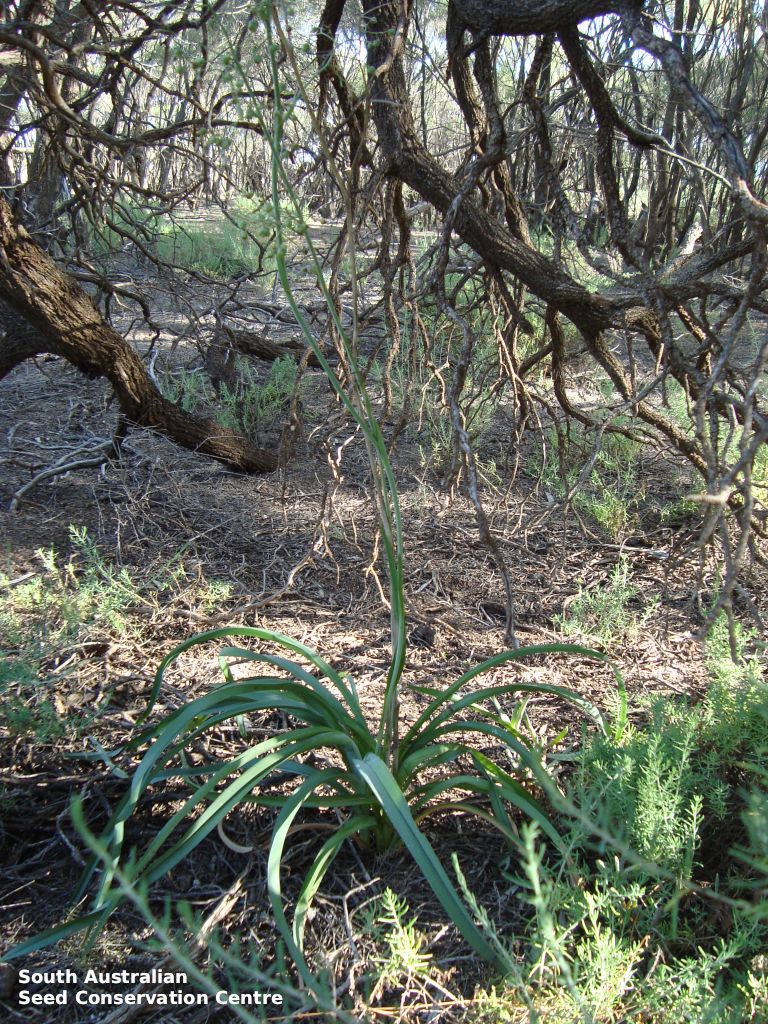
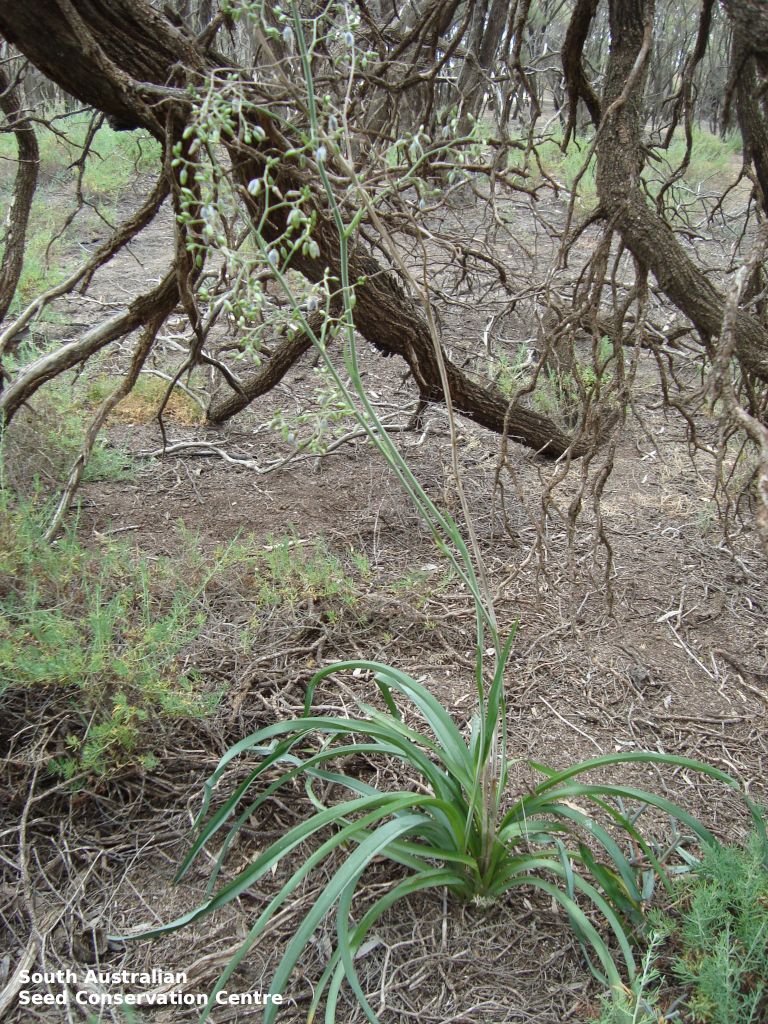
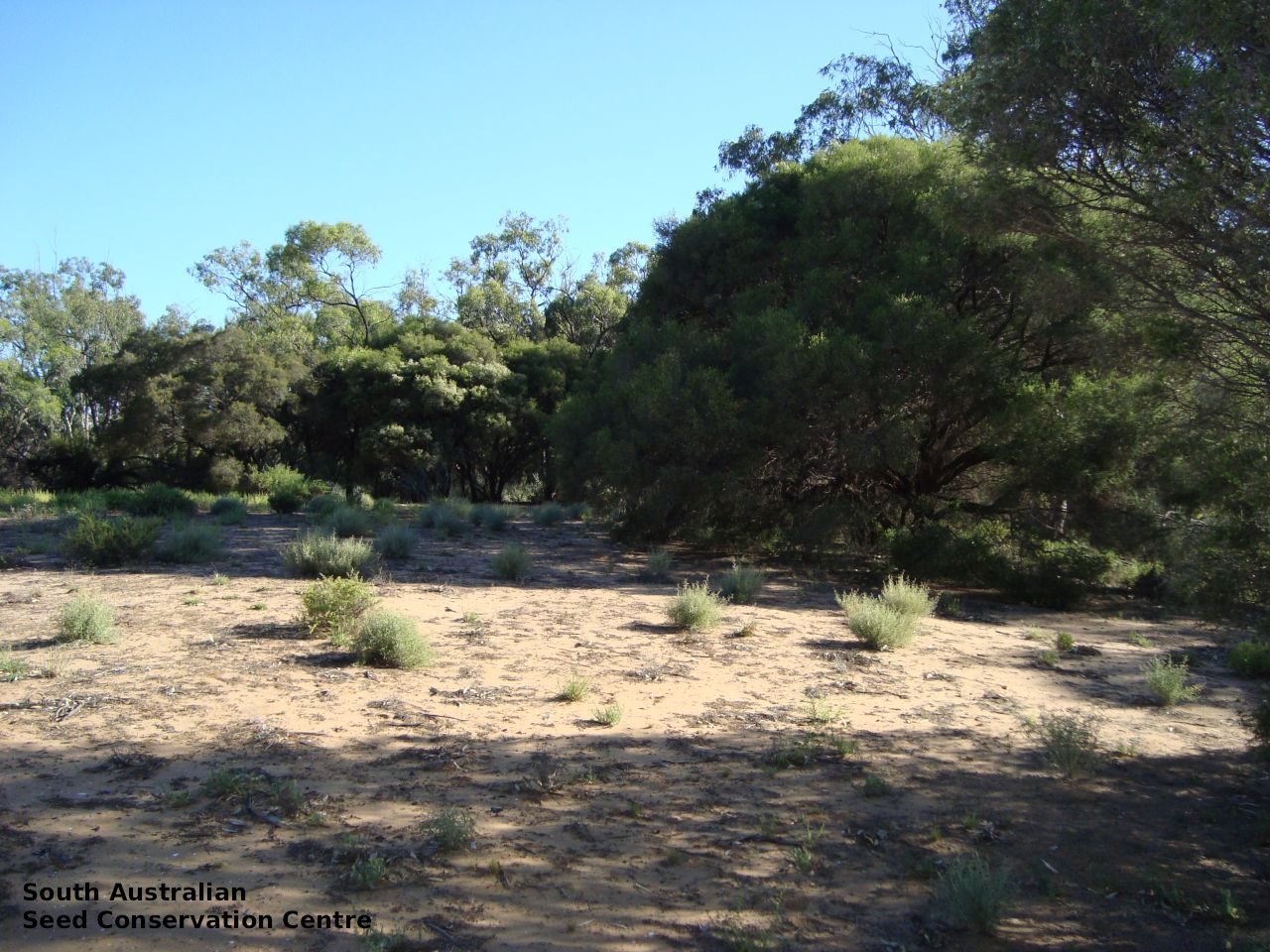
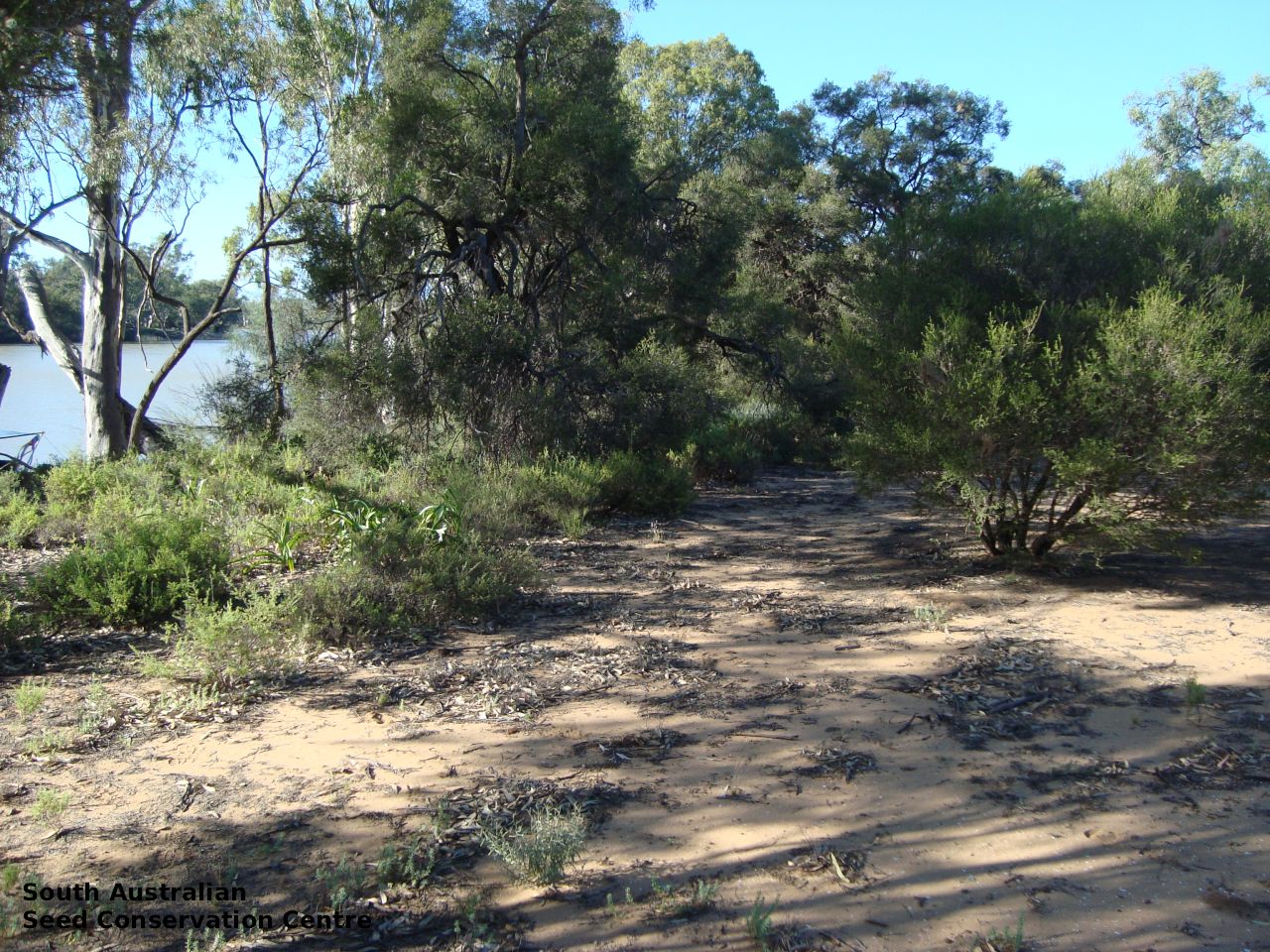
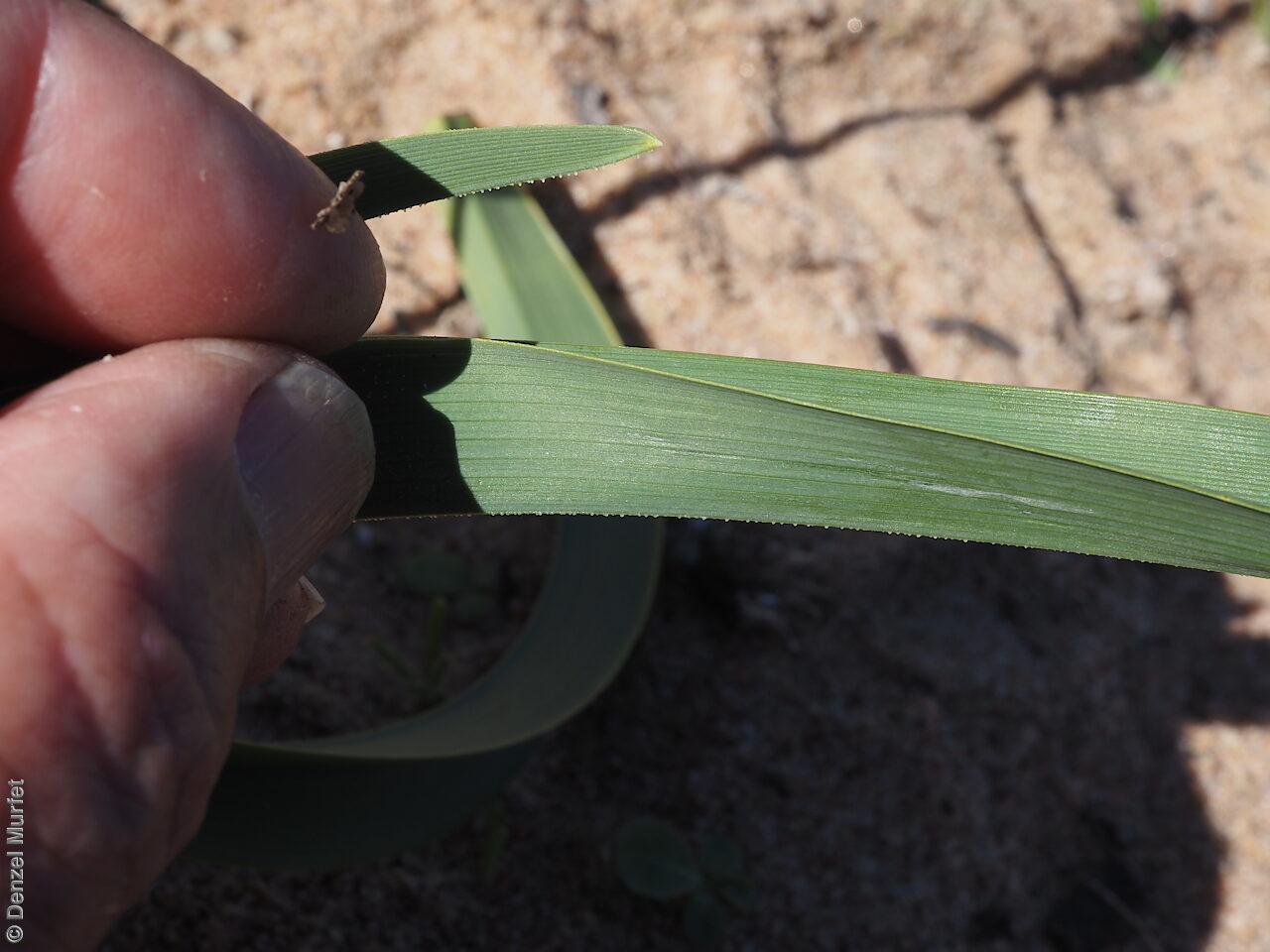
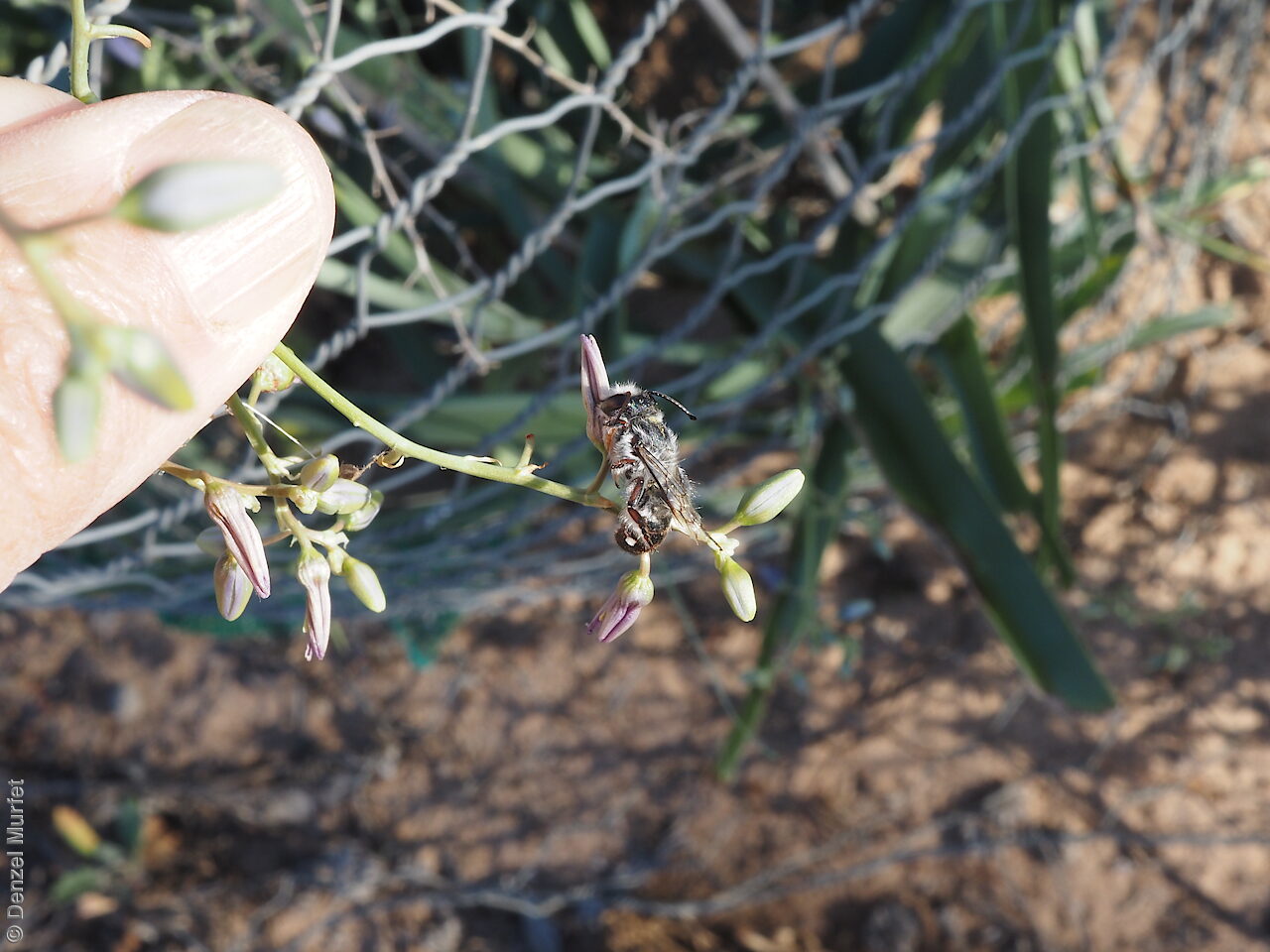
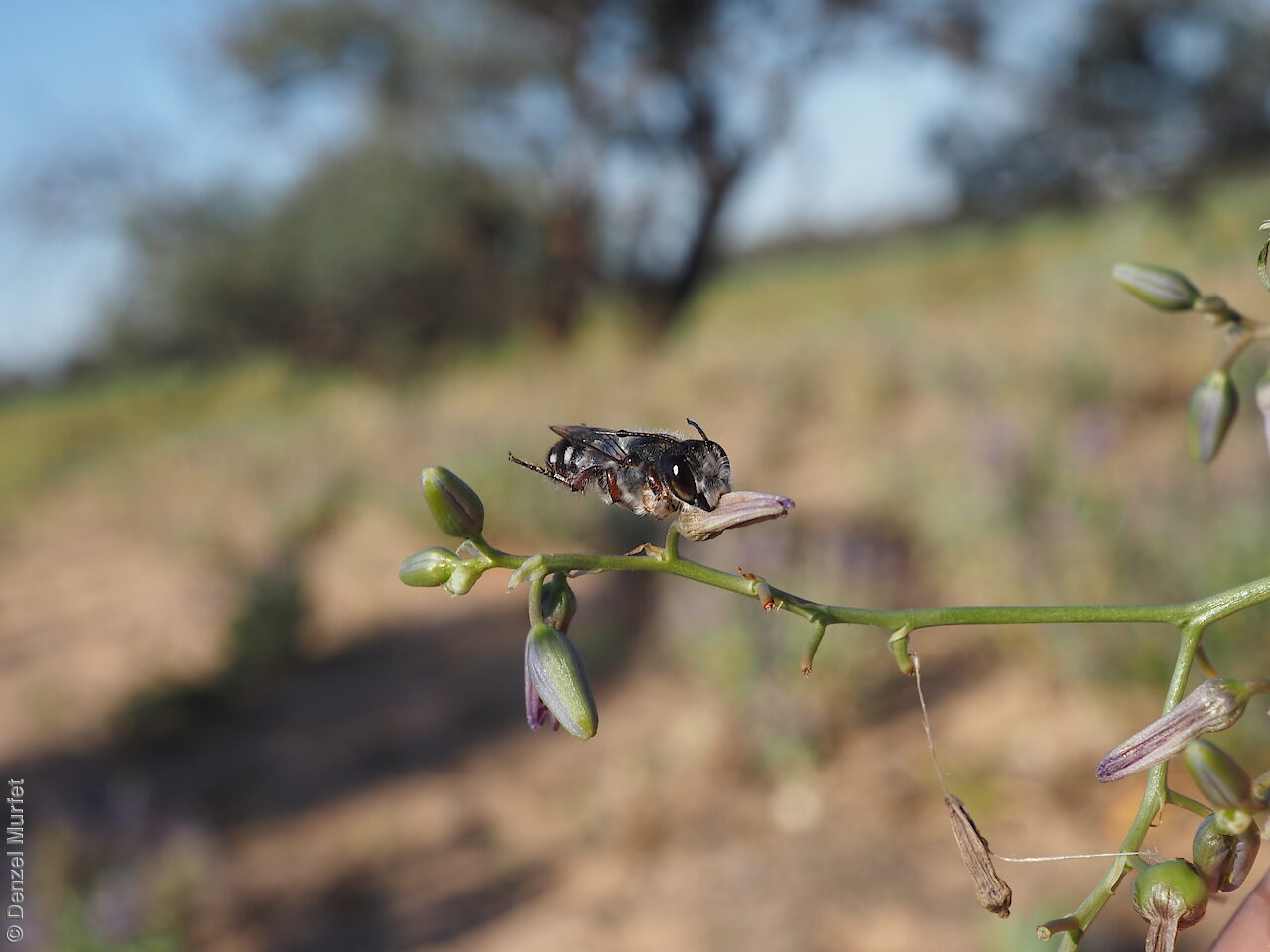
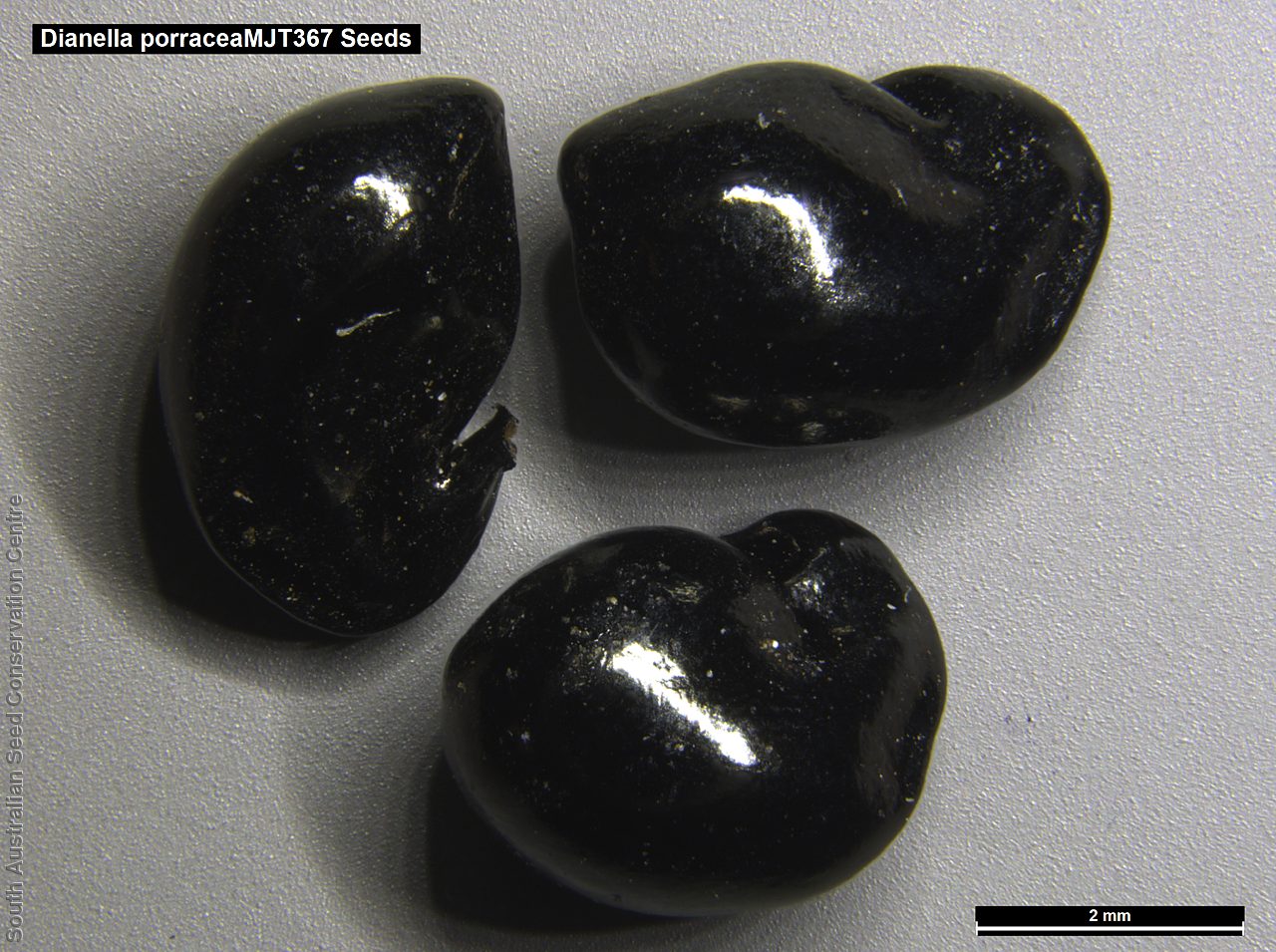
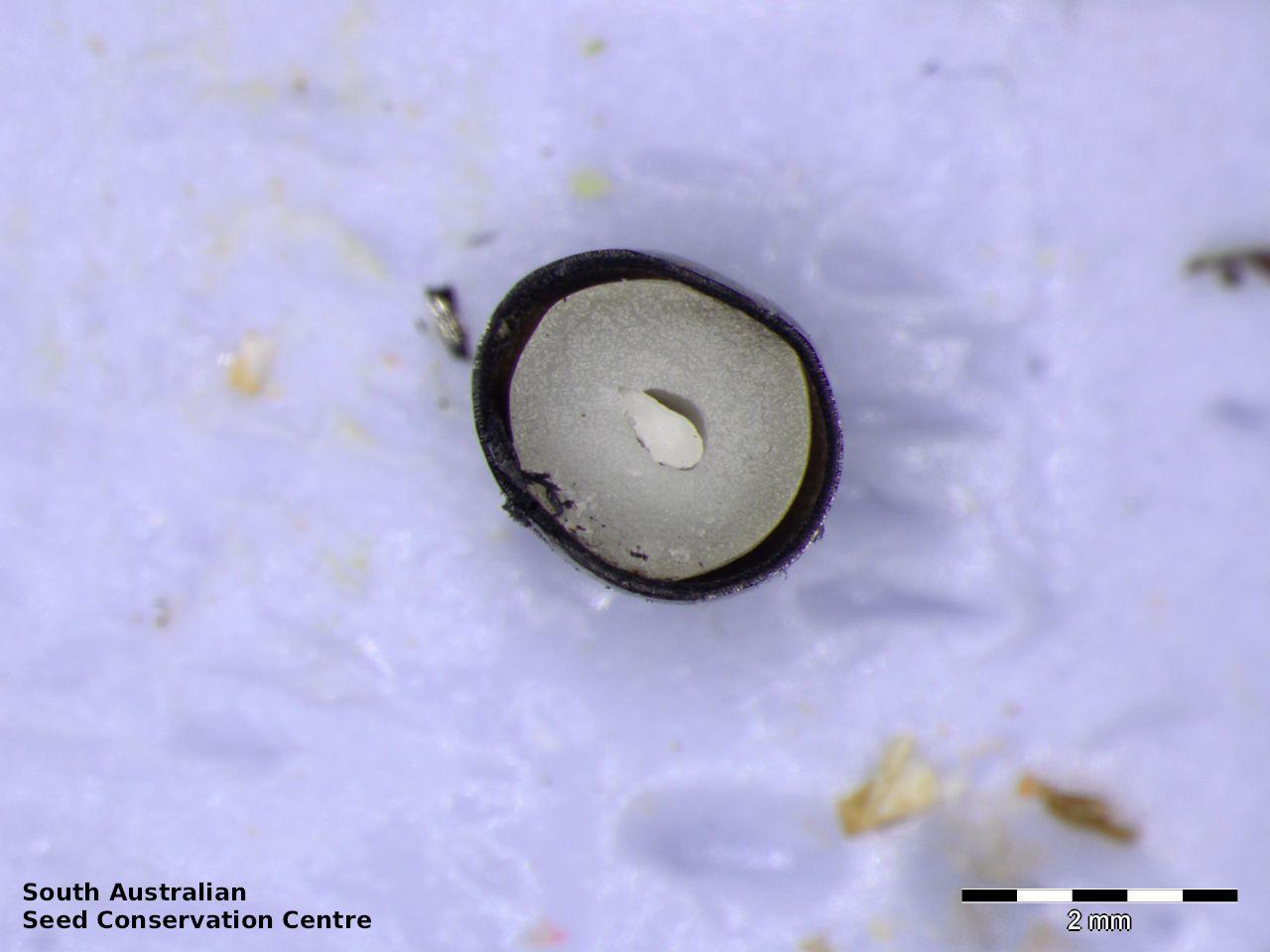


Prior names
Dianella laevis, partly
Dianella longifolia var. porracea
Common names
Yellow-anther Flax-lily
Pale Flax-lily
Etymology
Dianella is a diminutive of Diana, the virginal Roman goddess of hunting and the moon. The original species named was found located in the French woods, thus the hunting association. Porracea from the Latin 'porraceus' meaning leek-green; alluding to the colour of the flowers.
Distribution and status
Found in two disjunction populations in South Australia, west of Broken Hill and aound the upper reaches of the Murray River, growing on sandy soils and usually in the vicinity of water. Also found in Queensland, New South Wales and Victoria. Native. Rare in South Australia. Rare in Victoria. Uncommon in Queensland. Common in New South Wales.
Herbarium regions: Eastern, Murray
NRM regions: South Australian Arid Lands, South Australian Murray-Darling Basin
AVH map: SA distribution map (external link)
Plant description
Perennial lily to 1.2 m high forming tufts to 60 cm wide. Leaves to 20 mm wide, about the same breadth throughout its length; leaf blades glaucous or purplish, thick-textured. Flower-spike a small cyme with 2-10 pale-blue to green-blue flowers; anthers yellow. Flowers in October. Fruits are round blue berries containing numerous seeds. Seeds are shiny black ovoid seeds to 4 mm long and 3 mm wide. Seed embryo type is linear fully developed.
Seed collection and propagation
Collect seeds between November and January. Pick the fruits that are soft and purple. These will have hard black seeds inside. It is best to clean the fruit when it is fresh. Place fruits in a bucket of water and rub the fruit gently by hand to dislodge the seeds. Then use a sieve to separate unwanted material. Store the seeds with a desiccant such as dried silica beads or dry rice, in an air tight container in a cool and dry place. Seeds are non-dormant, viable seed should germinate readily.
| Location | No. of seeds (weight grams) | Number of plants | Date collected | Collection number Collection location | Date stored | % Viability | Storage temperature |
|---|---|---|---|---|---|---|---|
| BGA | 230 (2.01 g) | 3 | 28-Nov-2011 | MJT367 Murray | 1-Nov-2012 | 66% | -18°C |
| BGA | 800 (5.76 g) | 7 | 14-Dec-2011 | MJT373 Murray | 1-Nov-2012 | 89% | -18°C |
Number of plants: This is the number of plants from which the seeds were collected.
Collection location: The Herbarium of South Australia's region name.
% Viability: Percentage of filled healthy seeds determined by a cut test or x-ray.